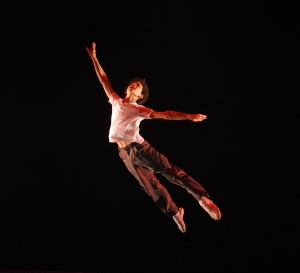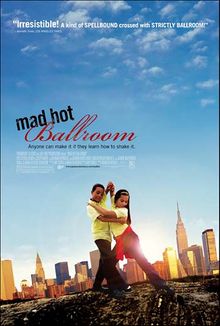Boys, Dance, and Gender Stereotypes in the Arts
by Andrew Swensen
I came to dance only recently in a life now in its middle age. It was an interesting encounter for me in the sense that it seems strange to have waited so long before gaining awareness of an entire art form. All my adult years involved participation in one art or another — music, film, literature, theater — but for a variety of reasons, I never really gave dance proper attention. My loss.

Billy Elliott, as performed by David Alvarez (Photo: http://www.billyelliottour.com/us-tour)
For reasons surely rooted in rather silly gender expectations and stereotyping, boys typically do not dance. At all those high school dances, the girls are the ones who know the moves of the day. The boys stand on the other side of the room glued to the wall and holding some drink, so that they do not have to look awkward having nothing useful or appropriate to do with their hands. Then there are the dance lessons in gym classes. I am still trying to wrestle with the emotional anguish of square dancing, an obligatory unit during the school year. And of course classical dance is out of the question. Yes, boys believe themselves to be pre-programmed to resist ballet. Call it the Billy Elliott Dilemma: If you actually want to dance, make sure that you hide it.
I am not sure how much the situation has changed since my childhood, but it still lingers in some form or another. I have not heard about any reality shows that follow fathers taking their sons to dance studios, and the enduring appeal of Billy Elliott suggests that we see Billy as an anomaly and not a norm.
Now wiser than I was while not dancing at the prom, I find it all completely absurd.
These thoughts started percolating this past summer when I was reflecting on dance as an art form and came across the campaign, “Why Dance Matters” (with an active Facebook page here). Why does dance matter? Dance is expression. Dance is beautiful. Yet those answers do not distinguish dance specifically from other arts, and I want to be more specific. If it is expressive, how does it express the human experience in ways that other art forms do not, or at least better than other art forms? If it is beautiful, how does its beauty distinguish itself?

Mad Hot Ballroom (Photo: http://en.wikipedia.org/wiki/File:Mad_Hot_Ballroom.jpg)
Dance is dialogue in movement. We converse through dance, though not in words, and it represents an exploring ground for social interaction. Through the ages, societies observe ritual and rite through dance, engage in the group conversation taking the form of wedding dances, funeral dances, fertility dances. Certainly dance has had plenty of gender “rules,” but it seems like there was always a role for everyone. When did dance get saddled with gender taboo for boys? Or at least in our culture, for not all cultures are this way. The Argentinians, for example, seem to be tangoing up a storm down there. And if you have ever seen Maori men dance, you can rest assured that they are secure in their gender identity while dancing. Yet the issue should not be the anxiety over some notion of “masculinity,” and we should not fall prey to just force-fitting dance into existing gender identities and roles, often homophobic ones. Rather, dance, like so many arts, might offer us a path to the other side of gender stereotyping.
I find it odd that we have essentially muted half our population. I am not the first to press the issue (e.g. a nice piece from Dance Advantage), and of course we have good Billy Elliott, defying the expectations of his upbringing in the heart of British coalmining. Billy may even have been pushing a wave to come, according to a 2009 article from The Guardian, which notes a 83% rise in dance enrollment among boys in Britain. I could not find any reliable statistics for the U.S., but having spent a lot of time around young dancers (yes, I am a Dance Dad) I see precious few boys out there on the floor. One can also have a look at the wonderful documentary film Mad Hot Ballroom, and see how resistant the boys are at least initially. Yet of course the film also points to an opportunity for liberation from gender stereotypes, such that the energy among the boys and their engagement in this art form is clearly real and substantial.
It is hard to say how art forms develop gender stereotypes, but it is unfortunate. It took until 1997 before the Vienna Philharmonic admitted its first woman member. Of course no one is keeping boys out of dance, but some gender expectation seems to be a barrier still. Dance is about speaking without words but with your body. A good number of us are missing out on a conversation that matters.
Articles of Related Interest from The Muse Dialogue
“The Pavlova Effect” by Michelle Van Doeren
“Tanztheater as Art Form” by Marie Zimmerman
“Dance, Sand Mandala of the Arts” by Andrew Swensen









